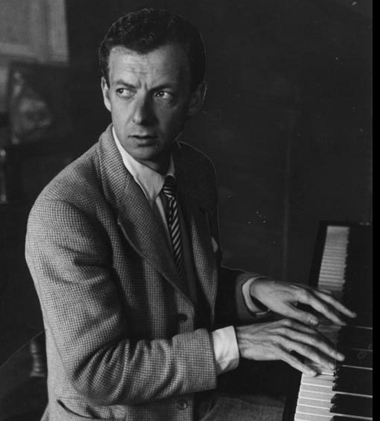Tracing the String Quartet

Photo: Takács Quartet performs. Photo courtesy of Frank Stewart /Savannah Music Festival via npr.org.
Like the Mass, Opera and the Symphony, music for String Quartet is one of the most enduring genres in Classical Music. Since the genre’s emergence at the end of the eighteenth century to the present, generation after generation of composers have found this grouping of a cello, viola and two violins, inexhaustibly fascinating. Although there are a few notable exceptions, nearly every composer from Haydn to the present day has used this genre as a place for growth, experimentation and, above all, individual expression. Armed with its deceptively simple instrumentation, the String Quartet is capable of achieving an enormous range of textures, colors and moods, a generous sampling of which will be on tap at the April 12 performance by the world-renowned Takács Quartet.
The evening’s program begins with a representative work by the father of the String Quartet, Joseph Haydn, who, arguably, invented the genre out of necessity while working at the country estate of Baron Carl von Joseph Edler von Fürnberg. The ‘Sunrise’ Quartet displays the foundational form for String Quartets in the Classical Period, which was borrowed from symphonic music. The first and last movements are fast, and intervening are a slow second movement and a minuet, or, sometimes, a scherzo, which feature lighter fast music than the outer movements. Beethoven, who studied with Haydn, continued this formalism in his charming early quartets, but by they time we get to the Quartet no. 14 in c-sharp Minor, we encounter a work that is much longer and more formally diverse than its predecessors in the genre.
Dating from the final period in Beethoven’s life, the Quartet no. 14 is a leviathan and explosive gesture of Romanticism. Although this might seem hard to believe to a contemporary audience, most of Beethoven’s late works, including this quartet, were considered wildly and undesirably avant-garde. The Quartet no. 14 breaks the rules by possessing an unprecedented structural circularity, which means the audience should consider the piece as one large musical idea, instead of a series of smaller, separate gestures grouped together under one title. This continuity is built into the performance of the Quartet no. 14, because its seven movements are played without breaks between them.

Benjamin Britten
If Beethoven’s Quartet no. 14 represents the genre’s ability to portray a composer’s idiosyncrasy, and Haydn’s ‘Sunrise’ Quartet represents String Quartet music’s formal origins, then Benjamin Britten’s String Quartet no. 3 in G major, proffers one example of how later composers balanced these seminal elements. The work uses a broad range of textures and colors, which harkens to the diverse material of the Beethoven, though String Quartet no. 3’s five movements are decidedly unrelated, which is more in tune with Haydn’s Classical Period quartets. Britten died two weeks before the String Quartet no. 3 was premiered, but the piece is not a personal requiem, despite its many haunting and beautiful passages. Nevertheless, the work is a culminating example of Britten’s music, not to mention more modern composers’ contributions to the long line of works written for String Quartet.
Garrett Schumann is a regular contributor to UMS Lobby. Read his other commentary.






